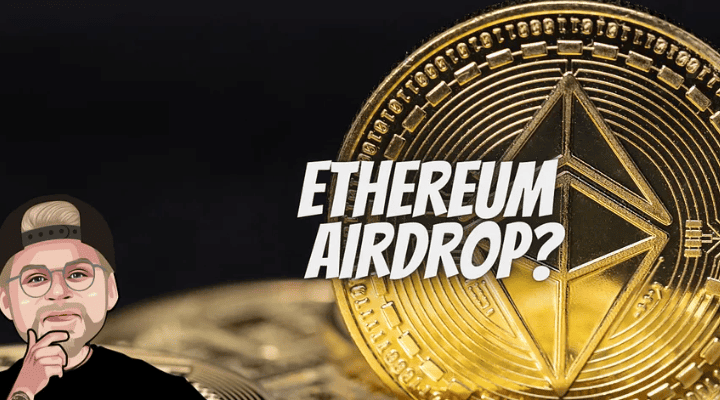
The Merge is coming soon, with the blockchain switching from Proof of Work to Proof of Stake. There will likely be two or even more Ethereum versions and a way to pick up some ETH for free. In this regard, a CoinGecko co-founder recently shared his strategy for the upcoming merge event.
Free ETH thanks to Ethereum Merge?
In the wake of the Ethereum Merge, Ethereum’s blockchain will switch from Proof of Work to Proof of Stake. The new Ethereum can no longer be mined; instead, holders of Ether (ETH) can stake them to earn new ones. However, there is a possibility that some miners will continue to mine the old Ethereum. There could be two blockchains with the same past but going completely different directions from the Ethereum fork. And holders of Ether can take advantage of this. Instead of buying Ethereum, they can get it free in an airdrop.
In a hard fork, the network splits and thus uses different cryptocurrencies from then on. For example, if Ethereum splits into Ethereum A and Ethereum B, the current account balance of the addresses in the network is duplicated to both versions. If user N owned 10 ETH before the hard fork, he would own 10 ETH A and 10 ETH B after the event.
Bobby Ong, the co-founder of CoinGecko, explained how investors could take advantage of this fact in a series of tweets. For instance, ETH holders can store their tokens on crypto exchanges that support the fork. Tokens in hardware wallets should also be entitled to PoW tokens.
Those currently holding their tokens in DeFi protocols should convert the wrapped ether (wETH) into the actual ether and remove them from liquidity pools. Bobby Ong’s strategy would be, he further explains in his tweets, to sell the tokens immediately. This is because all these tokens after the Ethereum fork, in his opinion, immediately become useless and only serve to reward the miners.
Is Ethereum news a cause for concern?
With the Bellatrix upgrade, Ethereum cleared the last hurdle before the big Merge and switched to Proof of Stake. This allows validators to execute transactions on the beacon chain. However, complications arose in the process. In this Ethereum fork, just over 5% of validators failed, resulting in 9% of blocks not being verified correctly.
In a tweet from Martin Köppelmann, one of the co-founders of Gnosis, he explains that this usually only affected 0.5% of new blocks. While this should still be kept in mind, this incident is not overly dramatic.
The reason for this could be the many nodes that are not yet ready for the change and the new upgrades. A good 25.6% of the current Ethereum clients fall under this category.
For example, Adam Cochran, a shareholder at Cinneamhain Ventures, comments that in the final Ethereum merge, most nodes should support the new updates. Some voices are pretty optimistic about this Ethereum news. For example, this Ethereum update is a complete success for Anthony Sassano, the founder of Daily Gwei. A failure of only 5% of the validators is a great result, he says in an article. In the worst case, the blockchain would halt, and transactions would no longer be verified. Missing blocks and failing validators are just something the new version of Ethereum can recover from quickly, he says.
It is a misreport that the Ethereum token would be called ETH 2.0 after the Merge. The name will remain with ETH, or if a chain split hard fork occurs, then the token would be named ETHS (for ETH token from PoS), and the “new” forked token would then be ETHW (ETH token from PoW).
Investors should be wary of tokens offered that are named ETH 2.0, these are worthless fake tokens.
Some crypto exchanges, such as Poloniex, which immediately traded the Ethereum Classic token at the time, have already prepared to trade with ETHW and ETHS.